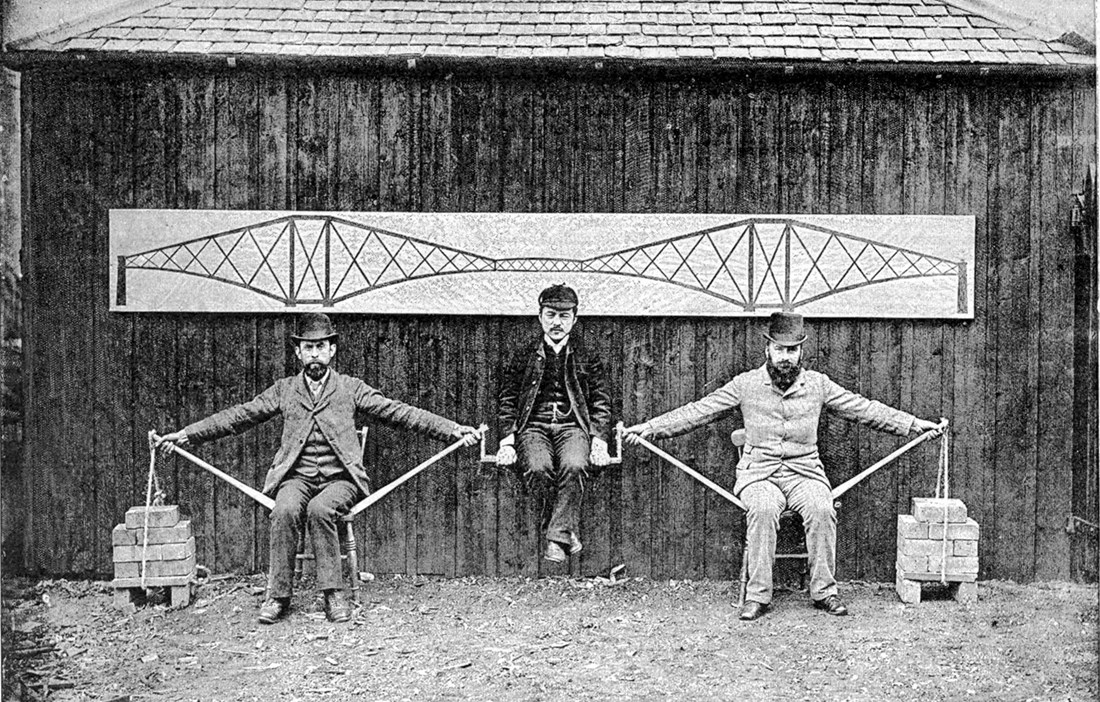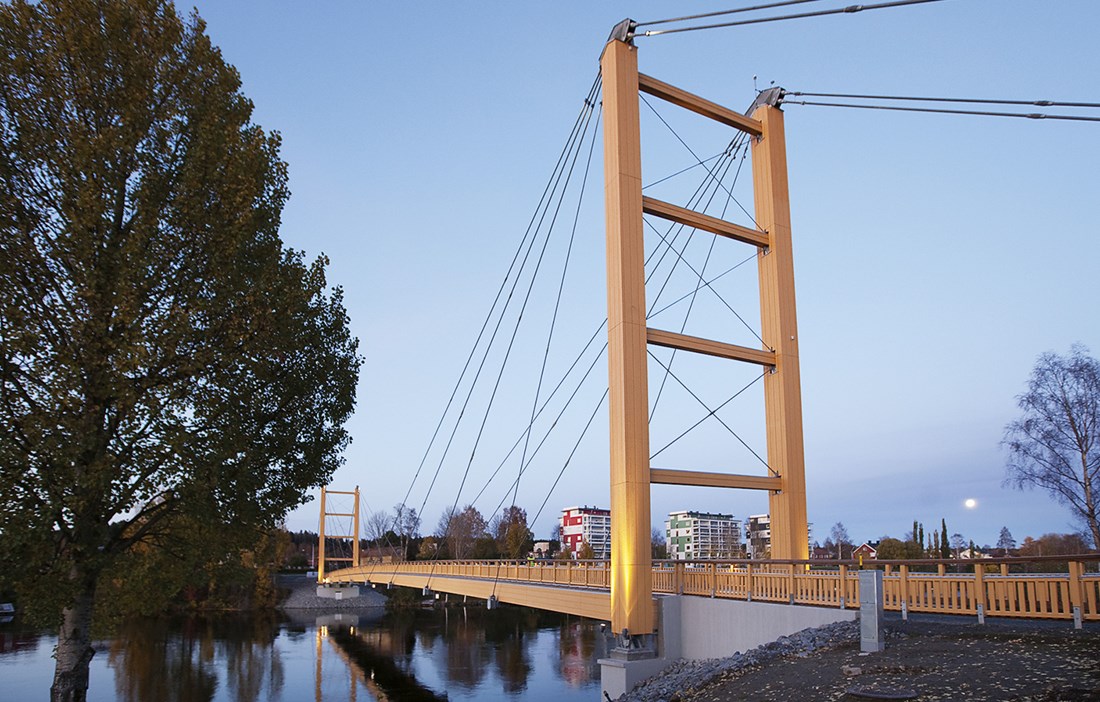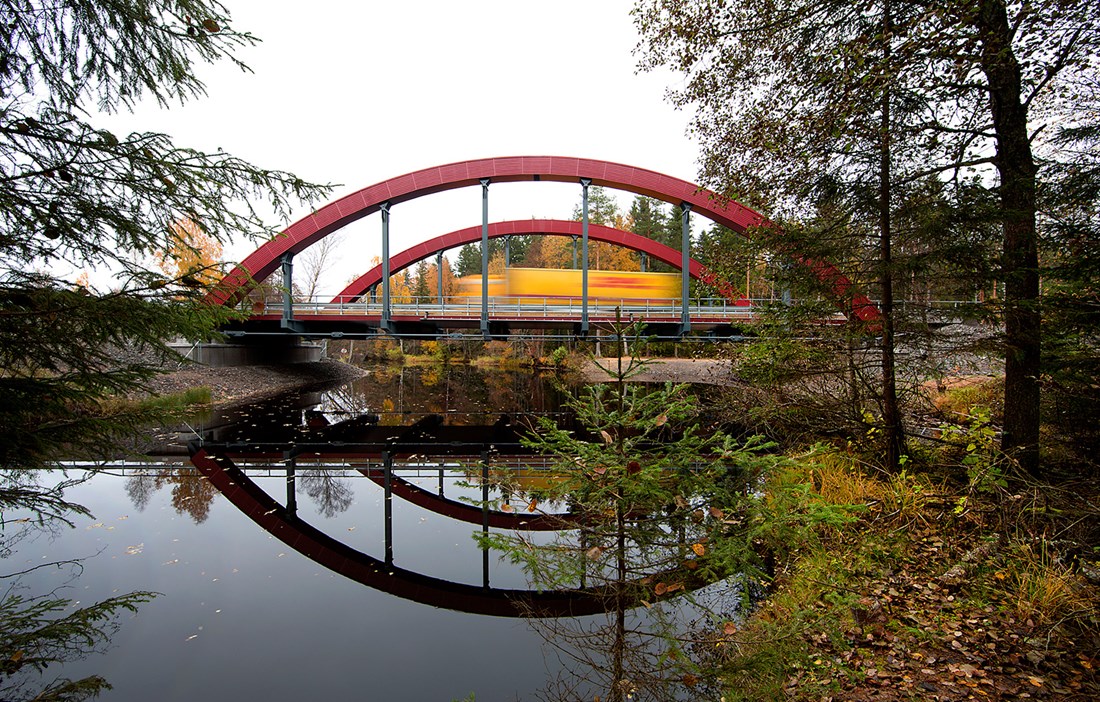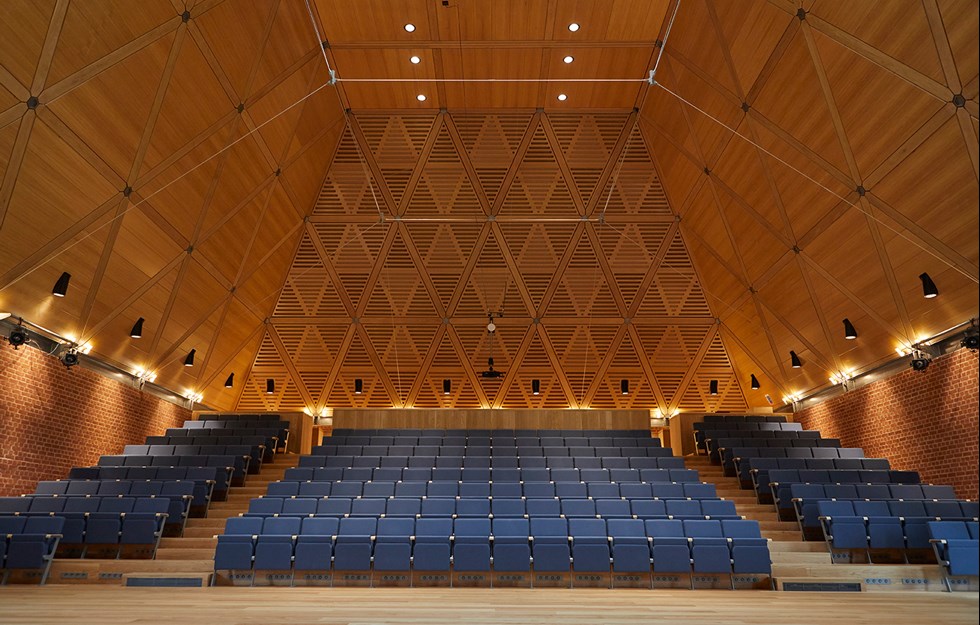Throughout history, bridges have played an important role in developing the art of engineering. For centuries, bridges have provided proof not only of a material’s load-bearing capacity but of engineers’ creativity. Wooden bridges have perhaps the longest history, since the world’s first bridge is highly likely to have been a tree conveniently blown over to allow people to cross a stream or other obstacle. For a long period, wood was the go-to material for building a bridge. Many wooden bridges were built from the Middle Ages up until the 19th century, and various new building techniques using trusses and arches were developed during this period. The 20th century saw wooden bridges give way to steel and later concrete, particularly for large spans. The development of new wood products, including glulam, now once again makes wood a competitive material choice for bridge projects. Today, wooden bridges are being built for both light and heavy traffic, although they remain limited in number.
One advantage of wooden bridges is that they can often be erected quickly, and the low weight of wood makes transport easier and therefore favours prefabrication. The low self-weight also means that bridges with low imposed load (pedestrian and cycle traffic) can often have slimmer designs in wood than in concrete, where the weight of the material accounts for much of the load. However, the breaking load is often not the determining factor for slender wooden bridges. In fact, it tends to be the permitted deflection. For bridges with long spans, the requirement concerning permitted oscillations will also usually inform the design.
A bridge that has both a slender design and a long span is the Muskrat Bridge over Bow River in Banff, Canada. Here, oscillations were a major challenge for the structural engineer. The oscillations were tackled with the help of two tuned mass dampers that were fitted underneath the bridge and calibrated to counter its resonance. Thick steel plates are suspended on cables to provide the counterweight for the damping. Adjusting the number of steel plates allows the damping effect to be calibrated in order to best handle dynamic loads from the pedestrian and cycle traffic.
The 113 metre-long bridge is a cantilever design, made of tapering glulam beams in a form that is meant to follow the distribution of moment across the structure. The height of the glulam beams varies from 2.6 metres at the supports to 0.9 metres at the narrowest point. The bridge is divided into three main sections – two cantilevers, each resting on a concrete pier, and a 34 metre simply supported beam section resting on the end of each cantilever. In the land abutment, each cantilever is anchored with ties to resist the lifting forces that occur. This is a tried-and-tested method, ably illustrated above by Sir John Fowler and Sir Benjamin Baker, with the help of their assistant Kaichi Watanabe. The 4 metre-wide deck is made of cross-tensioned CLT elements. The bridge is designed for a service life of 75 years. The unsupported span between the piers is 80 metres, making the bridge one of the longest of its kind.
For even larger spans, the cable-stayed bridge is a better option. One example of such a bridge is Älvsbackabron in Skellefteå, which was completed in 2011. Measuring 183 metres in total, the bridge has an unsupported span of 130 metres and, like the bridge in Banff, is designed for pedestrian and cycle traffic. For heavier loads, such as road traffic, tied-arch bridges are usually more suitable. Tied-arch bridges also have the potential to cover large spans, since the arch is subject to a compression load, with not much of a bending force. Wood is an eminently formable material, and is therefore well suited to this type of structure. A good example of a tied-arch bridge is Gislavedsbron, 47 metres long and designed for heavy traffic.
According to Swedish Transport Administration rules, wooden bridges must have an estimated service life of either 40 or 80 years. Both Älvsbackabron and Gislavedsbron are expected to have a service life of 80 years. To achieve this, it is important to protect the wood from prolonged exposure to moisture. Cladding keeps the weather out and is often a key part of the structural wood protection. Another method is to give the bridge a roof. This is not particularly common in Sweden, but Switzerland has covered bridges that are several centuries old.
All these examples show that, as a result of amassed knowledge and major technical advances, wood once again has the potential to be a natural choice when designing bridges. Just like wooden buildings, wooden bridges bring major climate benefits, and if we are to meet the climate objectives set in Sweden, the choice of material for bridges should follow the same trend as for buildings, leading to more wooden bridges.
text Petter Werner

























